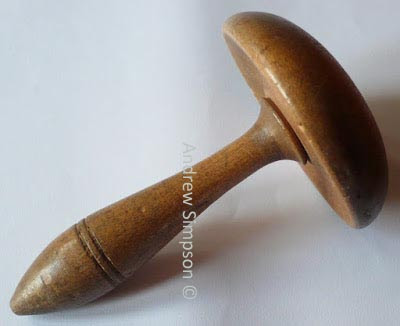Now even when you are ten, the sun doesn’t shine everyday of the summer holidays, and equally there can be plenty of grim grey days stretching through spring and into winter.
And this being the late 1950s, there was no back to back television to watch and so on slow Sundays with all your friends away at Butlins, the days could lay heavy.
But it being the day after I got my pocket money there was always the plastic Airfix model to complete.
They came in different sizes, ranged from small battleships to large complicated Second World War aircraft and could be guaranteed to fill part of a day.
Once assembled, there was the painting, followed by the application of transfers and then hours where my imagination brought the Lancaster bomber or Panther tank to life.
With enough of them it was possible to create a scene filled with planes, vehicles and those little figures which Airfix also sold. One such recreation took over the top of a dressing table which had been covered in an old sheet, dyed green with bits of hedge and trees taken from our big model railway set.
But that wasn’t all because long before the model had been bought there was the endless visits to the shop gazing at what was on offer.
For me three stand out. There was the one near London Bridge Railway Station, another just off Peckham High Street and finally the one in Well Hall.
I spent hours just looking, especially at the very big expensive ones.
Of course the completed ones in the window always beat my attempts hands down but that never stopped me trying to emulate them.
But the moment comes when music, girls and clothes take over.
That said I never quite lost my fascination for making plastic kits, and in my early years as a teacher, keen to bring history alive in the classroom, I returned to Airfix.
Once the figure or model had been made it went into a glass cabinet at work, coming out to illustrate a history story or the finer point of medieval armour. They sat beside a Viking oyster shell, some Roman coins and a heap of other very old everyday objects.
But not one to be over precious and authenticity, I fell on a battered open top sandal which in design was exactly like similar ones worn across the hotter parts of the Roman Empire.
And not for the first time I found myself mix historical truth with a fib.
Today almost sixty years after I first embarked on my love affair with Airfix I have but two models left, both dating from my time as a teacher. They are battered, missing bits but I can’t get rid of them.
Picture; Airfix model of Julius Caesar, 1974, from the collection of Andrew Simpson
 |
| Two Roman soldiers 1974 |
But it being the day after I got my pocket money there was always the plastic Airfix model to complete.
They came in different sizes, ranged from small battleships to large complicated Second World War aircraft and could be guaranteed to fill part of a day.
Once assembled, there was the painting, followed by the application of transfers and then hours where my imagination brought the Lancaster bomber or Panther tank to life.
With enough of them it was possible to create a scene filled with planes, vehicles and those little figures which Airfix also sold. One such recreation took over the top of a dressing table which had been covered in an old sheet, dyed green with bits of hedge and trees taken from our big model railway set.
But that wasn’t all because long before the model had been bought there was the endless visits to the shop gazing at what was on offer.
 |
| Much battered, 1974 |
I spent hours just looking, especially at the very big expensive ones.
Of course the completed ones in the window always beat my attempts hands down but that never stopped me trying to emulate them.
But the moment comes when music, girls and clothes take over.
That said I never quite lost my fascination for making plastic kits, and in my early years as a teacher, keen to bring history alive in the classroom, I returned to Airfix.
 |
| The sock darner .... a world we have lost, 1900 |
But not one to be over precious and authenticity, I fell on a battered open top sandal which in design was exactly like similar ones worn across the hotter parts of the Roman Empire.
And not for the first time I found myself mix historical truth with a fib.
Today almost sixty years after I first embarked on my love affair with Airfix I have but two models left, both dating from my time as a teacher. They are battered, missing bits but I can’t get rid of them.
Picture; Airfix model of Julius Caesar, 1974, from the collection of Andrew Simpson
I was a keen constructor of Airfix kits - planes, tanks etc - but had no interest in the historic human figures they made. I remember visiting the newsagent in Egerton Arcade with a friend who was in search of HMS Hood. Unfortunately it was out of stock but the helpful young shop assistant suggested "Try Oliver Cromwell, he floats!" Strangely my friend accepted!
ReplyDelete